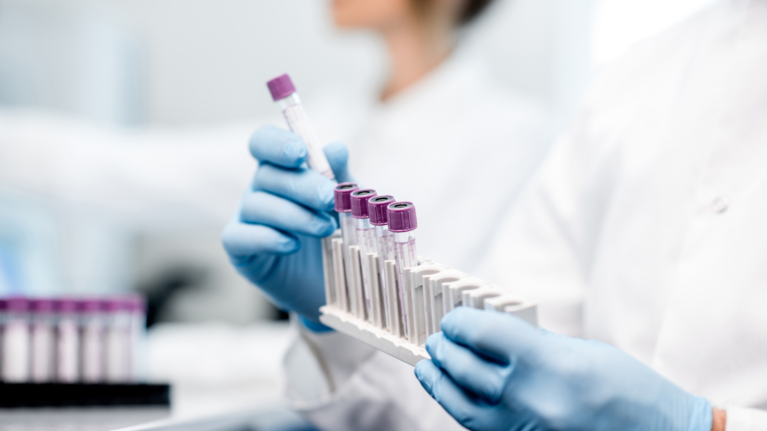

 By Chris Austin
5 min read
27 Jul 2023
By Chris Austin
5 min read
27 Jul 2023
Whether in a small academic lab or part of a large team in a big pharma lab, managing and storing hazardous or potentially infectious substances are crucial for personal safety and environmental protection.
Whilst improper chemical storage can lead to serious incidents like fires, chemical burns, or even glass vessel ruptures, recent events, such as the fear surrounding the possible lab origin of SARS-CoV-19, provides a stark reminder of the importance of the safe and effective storage of viruses to prevent any potential risks to public health and safety.
In this blog, we’ll explore best practices for safely and effectively handling chemicals and viruses in the laboratory. Equipping yourself with this knowledge can create a safer, more organised, and more secure working environment. By no means are the laboratory practices listed here a comprehensive list, so please consult with your EH&S supervisor to ensure that your lab fully complies with your organisation’s safety regulations within the country you operate in. If you operate in multiple countries, consider adopting the highest standards from each to create a global standard that can be used in every country.
Chemicals are widely used in various life science and pharmaceutical applications for research, product development, and production. However, improper storage of chemicals can lead to serious accidents such as explosions, fires, and toxic gas releases. Therefore, it is essential to store chemicals safely and efficiently to prevent accidents and ensure the safety of your lab personnel.
Here are some best practices and tips for safely and efficiently storing chemicals.
The location of the chemical storage area is critical to ensure the safety of the workers and the environment. The storage area should be located away from ignition sources, such as flames, sparks, and electrical equipment. It should also be located away from direct sunlight, moisture, and extreme temperatures.
The storage area should also have adequate ventilation to prevent the accumulation of toxic fumes or gases. In addition, the area should be well-lit and have clear labels indicating the type of chemicals stored and their hazards.
Chemicals should be stored in appropriate containers compatible with the chemical being stored. For example, acids should be stored in acid-resistant containers, while flammable liquids should be stored in grounded, explosion-proof containers. Chemicals should never be stored in food or drink containers or unmarked containers.
It is also essential to label all containers with the name of the chemical, its hazard class, and any other relevant information, such as the date of purchase, date of opening, and expiration date.
Chemicals should be segregated based on their compatibility to prevent accidental reactions. For example, acids should be stored separately from bases, and oxidising agents should be held separately from flammable substances.
Chemicals should be stored according to their hazard class. The four main hazard classes are flammable, corrosive, toxic, and oxidising. Flammable liquids should be stored in a cool, dry, well-ventilated area away from ignition sources. Corrosive chemicals should be stored in a dedicated storage area with a spill containment system.
Toxic chemicals should be stored in a secure area with limited access, and oxidising agents should be held separately from flammable materials.
All employees who handle chemicals should be trained in safe chemical handling practices. This includes proper handling and storage procedures, personal protective equipment (PPE) requirements, and emergency response procedures. In addition, employees should be trained to read and interpret chemical labels and safety data sheets (SDS).
A chemical inventory system should be implemented to keep track of all chemicals in storage. The inventory system should include the name of the chemical, quantity, location, hazard class, and expiration date. The system should also have a method for safely disposing of expired or unwanted chemicals. eLabInventory is an example of an inventory management system that can be employed as a chemical inventory system (or similar). We should be aware that we currently cannot provide hazardous labelling in the system.
If you’re in a laboratory that deals with viruses, then being aware of the proper safety and containment procedures is incredibly important. This reduces the risk of lab personnel being accidentally infected or spreading the infection outside the lab. Here are some commonly used methods to effectively manage the risks of working with viral pathogens.
Viruses can be stored frozen at extremely low temperatures, typically -80°C or colder, using cryoprotective agents to prevent damage from ice formation. This method is commonly used for long-term storage and can preserve virus viability for decades. Another storage method, lyophilization (also known as freeze-drying), involves removing water from the virus, leaving behind a stable, dry product. The virus is frozen, and a vacuum is applied to remove the water, preserving the virus for an extended period. This method is often used for short-term storage and transportation.
Prioritise containment measures to minimise exposure and infection risks. Utilise primary barriers, such as biosafety cabinets (BSCs) and enclosed containers. This will help prevent the release of infectious aerosols during manipulative procedures.
Design laboratory facilities with secondary barriers to protect personnel and the environment. Regularly maintain and inspect laboratory equipment to prevent malfunctioning that could lead to accidental virus release. Emphasise the importance of good microbiological techniques and specialised safety practices in handling emerging viruses safely.
Enforce the proper use of Personal Protective Equipment (PPE) when working with viruses. Ensure laboratory personnel wear appropriate gloves, gowns, face shields, and respirators, depending on the specific tasks and potential exposure risks.
Provide training on how to don and doff PPE correctly to minimise the risk of contamination. It is essential to fit-test all respirators to ensure a proper fit and consider vaccination as an additional precaution to enhance personal protection.
Implement robust biosecurity plans to prevent emerging viruses’ unauthorised release and misuse. Conduct risk assessments and identify potential threats, vulnerabilities, and countermeasures specific to the laboratory facility.
It may also be necessary to involve specialised working groups comprising scientists, administrators, security staff, and law enforcement when necessary. Focus on physical security, personnel security, material control, transport security, and information security to safeguard against bioterrorism threats.
The safe and efficient management of chemicals and viruses in laboratory settings is paramount to ensure the well-being of laboratory personnel and protect the environment. Improper chemical storage can lead to hazardous incidents, while mishandling viruses can pose severe risks to public health. Part of adequate chemical inventory and virus sample management is tracking what’s in stock, where samples are, and all associated metadata.
The eLabNext digital lab platform can provide a simple, secure, and safe solution for your chemical and virus management needs.

 By Ahmed Khalil
By Ahmed Khalil
Discover how integrating voice technology with electronic lab notebooks (ELNs) streamlines workflows, minimises errors, and accelerates R&D.
Read more
 By Zareh Zurabyan
By Zareh Zurabyan
From inventory assessment to quality control measures, learn how to digitise your lab effectively, one sample at a time.
Read more
In this blog, we explore the essentials of lab protocols and SOPs. Discover how digital lab solutions can help you to write more effective lab procedures.
Read more
Schedule a Personal Demo for friendly expert guidance and a free lab workflow assessment.